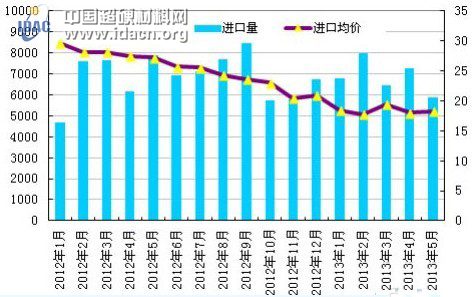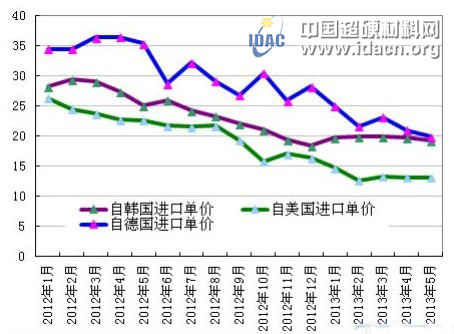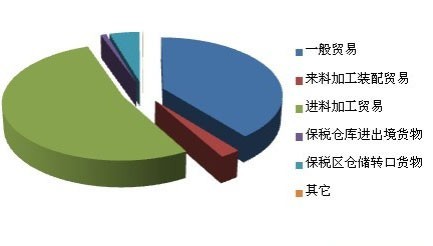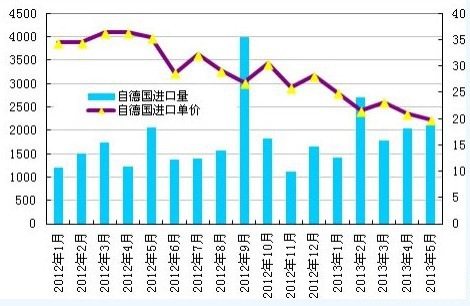Abstract According to the latest Customs statistics show that in May 2013 Polysilicon China's import volume is 5859 tons, the chain fell 19.35%, up sharply down 25.8% since 2013, the lowest value imports; at the same time, in May China's polysilicon import price Microscopic...
According to the latest customs statistics, China's polysilicon imports in May 2013 were 5,859 tons, down 19.35% from the previous month, a sharp drop of 25.8% year-on-year, the lowest value since 2013. At the same time, the average price of China's polysilicon imports in May was slightly The increase to 18.24 US dollars / kg, an increase of 1.3% from the previous month, down 32.9%. The Silicon Industry Branch believes that the main reason for the sharp decline in the amount of imported polysilicon in May is that the industry expects the domestic polysilicon “double-reverse†case to be cut in June and pushes the import price to rebound slightly. 
According to the country-specific import data in May, imports from South Korea, the United States, and Germany accounted for 87% of the total imports. These three countries are still the countries with the largest export of polysilicon. Among them, imports from South Korea were 1342 tons, accounting for 22.9% of total imports; imports from the United States were 1661 tons, accounting for 28.3% of total imports; German imports were 2,097 tons, accounting for 35.8% of total imports; other regions The import volume is 760 tons, accounting for only 13% of the total. Among them, the amount of polysilicon imported from the United States and South Korea declined in different degrees in May, while the import volume from Germany showed a slight increase, resulting in the import of polysilicon from Germany in May. From January to May 2013, the total import volume from Korea, the United States and Germany was 29,708 tons, accounting for 86.5% of the total imports. Among them, the total imports from Korea were 8,150 tons, the total imports from Germany were 10062 tons, and the total imports from the United States were 11,496 tons.
From the export prices of the three major polysilicon exporting countries in May 2013: South Korea 19.19 US dollars / kg, the United States 13.19 US dollars / kg, Germany 19.19 US dollars / kg. In May 2013, the unit price of imports from the United States rebounded slightly by 0.7% from April 2013. The unit prices of imports from Korea and Germany continued to decline in April 2013, which showed a different degree of decline from April 2013. The unit price of imported polysilicon remained the lowest among the three countries in May 2013, while the average monthly price in Germany hit a record low. The average price of polysilicon imports from January to May 2013 was US$18.33/kg, of which the average price of imports from South Korea from January to May was US$19.72/kg, and the average price of imports from Germany from January to May was US$21.87/kg, 1-5. The average monthly import price from the United States was $13.51/kg.



Korea:
In May 2013, the amount of polysilicon imported from South Korea fell sharply to 1,342 tons, down 37.3% from the previous month. The unit price of imports continued to decline slightly to US$19.19/kg in April, a decrease of 2.8% from the previous month. In the first five months of 2013, the total amount of polysilicon imported from South Korea was 8,150 tons, and the average price was 19.72 US dollars/kg. The import price in January-May was relatively stable.

The amount of polysilicon imported from the United States decreased in May 2013 to 1,661 tons, down 14.3% from the previous month. The unit price of imports increased by 13.19 US dollars per kilogram, up 0.7% from the previous month. In the first five months of 2013, the total amount of polysilicon imported from the United States was 11,496 tons, and the import volume ranked first among the three major importing countries; the average price was 13.51 USD/kg, and the lowest point appeared in February, which was 12.57 USD/kg, followed by 13 USD/kg above the low level.

In May 2013, the amount of polysilicon imported from Germany increased slightly to 2,097 tons, an increase of 2.3%. In May, the unit price of imports continued to decline to 19.91 US dollars/kg, a 5.0% decrease from the previous month, a record low since 2012. In the first five months of 2013, the cumulative amount of polysilicon imported from Germany was 10062 tons, and the average price was 21.87 US dollars/kg.


Guanidine Nitrate,Hot Sale Guanidine Nitrate,Superfine Guanidine Nitrate,Ultra Micronized Guanidine Nitrate
Beilite Chemical Co., Ltd. , http://www.dicyandiamideblt.com